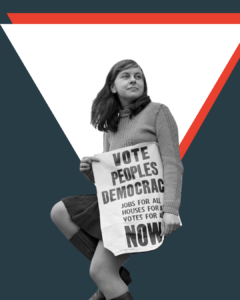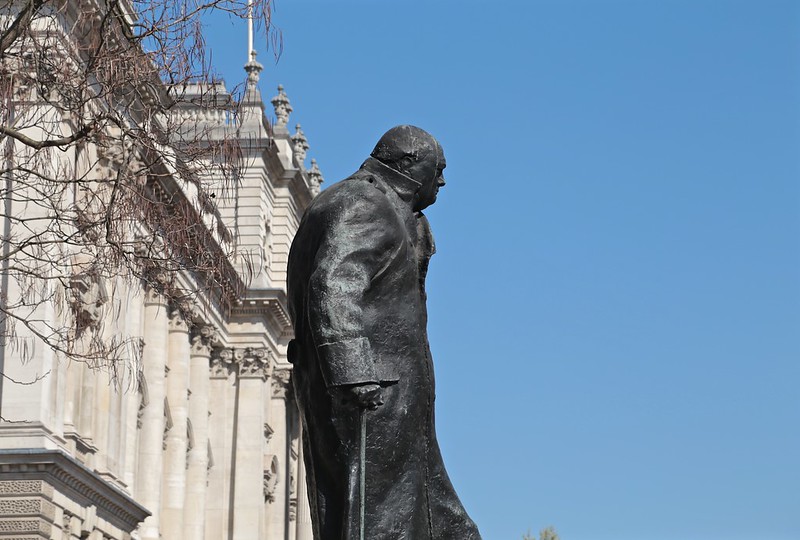Irish people are no strangers to debates about history and its many and conflicting interpretations. Below, we publish extracts from an excellent article by Professor Richard J Evans which reflects on the issues and debates around statues, their retention or removal. We think it has significant resonance for debates here in Ireland and internationally.
Extracts from this article were first published in the New Statesman magazine in June 2020. Richard J Evans is regius professor emeritus of history at Cambridge University and is the author of The Third Reich in History and Memory (published by Abacus). The full article is certainly worth a read and can be found at the New Statesman.
Many of my British contemporaries clearly still live in the cultural world framed by the British empire, which was built on the foundations of white supremacy and racial arrogance. According to an opinion survey carried out by YouGov in 2014 for the Times, 59 per cent of respondents in the UK thought the British empire was something to be proud of. Interestingly, by March 2020, this percentage had almost halved, and stood at 32 per cent. Clearly, a significant cultural shift has occurred.
What we remember as a society derives in the end from the kind of society we are, and reflects the kind of society we want to be. Britain’s cultural memory at the height of its imperial power – the late Victorian era, when so many of the statues now attracting attention were made – is not appropriate for Britain in the 21st century … We have also become a multicultural, multiracial society, displayed in its full glory at the 2012 London Olympics, an event that made me feel truly proud to be British.
Cultural memory finds solid expression with public statues, monuments and memorials. They are there to remind us of who we are, or better put, who we want to be, as a nation. It is an obvious point that some memorials are no longer fit for purpose.
One such is the statue of Edward Colston in Bristol, put up in 1895, at the height of British imperial pride and of the racist theories and practices that underpinned the empire. At the time, and for nearly a century afterwards, the statue reminded Bristolians of the philanthropic benefactions Colston had bestowed upon the city. Those who erected the statue did not concern themselves with how Colston had made his money.
But more recently the statue’s place in the city’s cultural memory has changed, and it has come to remind people of the fact that Colston made his fortune as a director of the Royal African Company, which, during this time, transported 84,000 enslaved men, women and children in degrading and inhuman conditions from Africa to the Americas; some 19,000 of them died of disease, malnutrition and mistreatment.
In an age when our revulsion against the treatment of people as less than human has grown, so too have protests against Colston’s glorification. Since the 1990s, Bristol City Council has considered a lengthy series of proposals to attach a plaque to the plinth describing his involvement in the slave trade. None of these has been accepted, however; delay followed delay, and on 7 June a crowd inflamed by worldwide anti-racist demonstrations triggered by the murder of George Floyd in Minneapolis pulled the statue down and threw it into the harbour. For every black person who passed by it, the statue had justifiably become an affront. The police, wisely, did not intervene.
Following this, as protests spread across Europe, Tower Hamlets Council in east London removed a statue of the slave owner Robert Milligan from public display. In Belgium, statues of King Leopold II – who ran the Congo as a private fiefdom before the First World War, forcing African labourers to produce rubber, and whipping, mutilating and killing those who fell short of their quotas – have been defaced or removed. Names of people associated with the slave trade have been taken of buildings across Britain…
Pressure has been growing for some time across the world to take down statues of Cecil Rhodes – one has already been removed from the campus of the University of Cape Town. Rhodes, the imperialist’s imperialist, regarded black Africans as inferior, and made his vast fortune in the second half of the 19th century from employing African workers in his diamond mines in dangerous and degrading conditions. Rhodes also dispossessed and disfranchised the African population of the Cape on racial grounds when he was prime minister of the Cape Colony between 1890 and 1896. He declared Anglo-Saxons to be “the first race in the world”, and reasoned that “the more of the world we inhabit, the better it is for the human race”.
Rhodes is far from being the only target of protesters. There is a movement to take down the statue of Oliver Cromwell – the leading parliamentarian general during the English Civil War of the 17th century, signatory of the death warrant of King Charles I, and Lord Protector of England during the Interregnum – from its current place outside the House of Commons in Westminster.
When it was erected in 1899 the statue was criticised by monarchists, but their protests counted for little. This was the heyday of the “Whig theory of history”, according to which the fight for parliamentary democracy and the limitation of royal powers had been carried on through the centuries by men such as Cromwell, culminating in the late Victorian era.
In recent years, many if not most historians have come to consider him a religious fanatic who imposed Puritanism on the country through a military dictatorship. And in the 21st century, he is remembered for genocide in the ruthless massacres he administered in Ireland – a point also made by Irish MPs when the statue was originally approved by parliament.
In the post-Holocaust era, when genocide has rightly taken a central position in public memory, and the Whig theory of historical progress has been thoroughly discredited, surely Cromwell’s display in front of parliament is no longer justified. The statue was the creation of specific historical circumstances, and so too is the justification for its removal, since those circumstances no longer obtain.
Condemnations of the removal of statues in Britain in the past few weeks have not been slow in coming. “Do we want simply to remove them from the public record, from a public presence and public reference?” asked the ancient historian Mary Beard. Responding to the “Rhodes Must Fall” campaign, Oxford University’s vice-chancellor Louise Richardson has warned that to take down his statue would be “hiding our history”. Boris Johnson tweeted on 12 June:
“We cannot now try to edit or censor our past. We cannot pretend to have a different history. The statues in our cities and towns were put up by previous generations. They had different perspectives, different understandings of right and wrong. But those statues teach us about our past, with all its faults. To tear them down would be to lie about our history, and impoverish the education of generations to come.”
Toppling monuments does not mean erasing history, as critics have claimed. Nor is putting them in a museum a way of removing them from public scrutiny – quite the reverse. Pulling down statues has nothing to do with history, and everything to do with memory.
Statues are about the present, not the past: they are about the values we want to celebrate through the people we regard as having represented them: that is why a statue of Nelson Mandela was put up in Parliament Square in 2007, or a statue of Nicholas Winton has recently been erected in Prague, where he rescued some 669 mostly Jewish children from the Nazis on the eve of the Second World War.
History is an academic discipline, with its own rules and procedures… It is not the same as memory – not individual memory, that is, but national, or collective, or cultural memory. Nor is history a matter of awarding ticks and crosses to the people of the past, canonising some as heroes and damning others as villains.
We might learn from Germany about how to deal with physical reminders of a controversial past. In the north German port town of Bremen, for instance, a huge redbrick elephant was put up in a park in 1932, to commemorate the overseas colonies taken away from Germany by the Allies at the end of the First World War, and to symbolise the demand for their return. By the 1970s, however, historians had uncovered the German army’s genocide of thousands of the Herero and Nama inhabitants of German South-West Africa, now Namibia, in the conflict of 1904-08.
The solution was not to knock the elephant down, but to rededicate it in 1989 as an “anticolonial memorial”, accompanied by a large bronze plaque explaining the nature of the atrocities and the history of the monument. Since the brick elephant isn’t offensive in itself, and even has a certain ponderous charm, this seems to have proved a satisfactory solution.
Rhodes may fall, along with Colston, and Milligan, and possibly others, but this achievement will remain symbolic until the real issues of racial discrimination, inequality and prejudice in our society have been addressed.
- With thanks to the New Statesman for permission to republish the article.
More on developmenteducation.ie

Calling Post Primary Teachers – Survey Participation Request
Your voice is vital in shaping the future of education for sustainable development in Ireland. Join a national survey for post primary teachers in October, led by DCU researcher Valerie Lewis

Webinar: Science for development on World Food Day
The webinar will feature YSTE projects, from Santa Sabina Dominican College (Dublin), Moate Community School (Westmeath) and CBS Thurles that focussed on nutrition and better food production, with Self Help Africa’s nutrition and gender specialist in Ethiopia, Sara Demissew.

Student & teacher webinar: Food, hunger and SDG 2
Join the World Food Day webinar for post primary school students and teachers which will explore SDG 2, hunger in today’s world and how you can make a difference locally and globally.

Beth Doherty: Youth Activism and the Climate Crisis
From School Strikes to Global Climate Talks The latest episode of the Irish Global Solidarity in 100 Objects podcast features Beth Doherty, climate activist and

Mary Lawlor: Defending Human Rights Defenders
A Conversation with the UN Special Rapporteur for Human Rights Defenders The latest episode of the Irish Global Solidarity in 100 Objects podcast features Mary

Irish Women in Activism and Advocacy
Explore inspiring stories of Irish women in activism and advocacy who have fought for human rights, social justice, and equality at home and abroad

